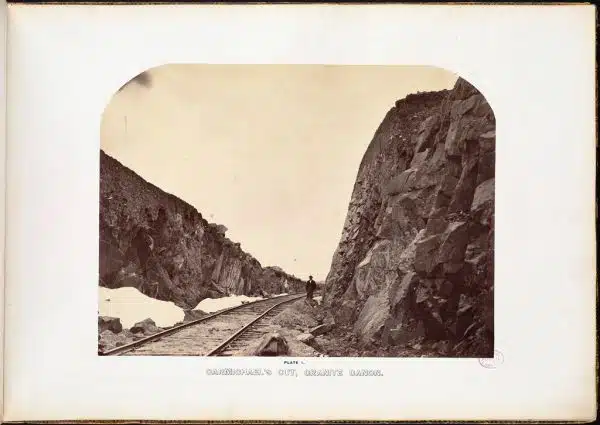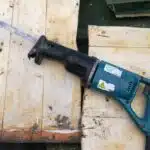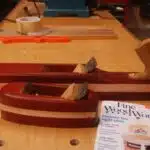Granite is an extremely durable and versatile natural stone that has numerous applications in construction and interior design. However, cutting granite can be quite challenging due to its hardness and density. As a professional granite fabricator/cutter, it is essential to have the right tools and techniques to ensure precise cuts without damaging the stone surface.
This article will explore three different methods of cutting granite: using a wet saw, a hand-held angle grinder, and a diamond wire saw. Each method has its advantages and disadvantages depending on the specific project requirements, budget, and skill level of the fabricator. By understanding the various cutting techniques available, fabricators can make informed decisions about which method to use for their projects and achieve outstanding results while serving their clients’ needs effectively.
Understanding The Properties Of Granite
Granite is a popular material used for various construction and design purposes due to its durability, strength, and attractive appearance. Understanding the properties of granite is essential in determining the appropriate cutting techniques to use when working with this material.
Granite is a natural stone composed of materials such as quartz, feldspar, and mica. It is an igneous rock that forms from the cooling and solidification of magma or lava. Granite typically has a coarse-grained texture and comes in various colors such as black, white, gray, pink, green, and blue. Its hardness rating on the Mohs scale ranges from 6 to 7.
Due to its hardness and density, cutting granite requires specialized equipment and techniques. The most common methods used are sawing, drilling, and grinding. Sawing involves using diamond-tipped blades that rotate at high speeds to cut through the granite slab. Drilling uses specialized drill bits with diamond tips to bore holes into the granite surface. Grinding involves using abrasive wheels or discs to smooth out rough surfaces or edges on the granite.
Understanding the properties of granite is crucial in choosing the right cutting method for your project. Factors such as the thickness of the slab, the type of cut needed, and desired finish can help determine which technique will yield optimal results. By utilizing appropriate cutting methods for each project’s unique needs, fabricators can ensure high-quality work while minimizing waste and maximizing efficiency.
Choosing The Right Cutting Method For Your Project
As a granite fabricator/cutter, we understand the importance of choosing the right cutting method for each project. Granite is a tough and durable material that requires specialized tools to cut through, and selecting the wrong tool can lead to disastrous results. In this section, we will discuss three cutting methods for granite and their pros and cons.
Choosing the right diamond blade is crucial when it comes to cutting granite. The diamond blade must be able to withstand high pressure and heat while maintaining its sharpness. There are two types of diamond blades: wet and dry. Wet blades use water as a coolant during the cutting process, while dry blades do not require any additional cooling.
Method 1: Using a wet saw A wet saw uses water to cool down the diamond blade during the cutting process, which reduces heat buildup and prevents damage to the blade. The water also helps to wash away debris from the cutting surface, leaving a cleaner cut. However, using a wet saw can be messy and requires access to a water source. It may also take longer than other methods due to the slower cutting speed caused by water resistance.
- Pros:
- Cleaner cuts
- Reduced risk of damaging diamond blade
- Less dust produced
- Cons:
- Requires access to water source
- Messy process
- Slower cutting speed – May require additional equipment (such as a water pump) to ensure adequate water supply and pressure.
Method 1: Using A Wet Saw
Using a wet saw is one of the most efficient ways to cut granite. This method requires a water source and a diamond blade suitable for the task. The water source is necessary to cool the blade during use, which helps prevent it from overheating and warping.
Before beginning, you must select the appropriate blade for your project. Blades come in different sizes and shapes, and each has its specific purpose. When cutting granite, you need to choose a diamond blade that is designed explicitly for this material. These blades are available in different sizes, but the most common size is 4 inches.
Once you have selected your diamond blade, attach it to your wet saw carefully. Before turning on the saw, ensure that there is enough water in the machine’s reservoir to keep the blade cool during use. Once everything is set up correctly, you can begin cutting your granite slab with ease.
Transition: Now that we have discussed how to cut granite using a wet saw let us move on to preparing the granite for cutting without using any conjunctive adverbs.
| Emotion | Image | Description |
|---|---|---|
| Satisfaction |  | After completing your project, you will feel satisfied with yourself knowing that you accomplished such a challenging task all by yourself! |
| Confidence |  | Cutting granite using a wet saw may seem intimidating at first but with proper preparation and execution, you’ll realize how easy it can be! |
| Accomplishment |  | After completing your project, you will feel accomplished knowing that you have created something beautiful and functional for yourself or someone else. |
| Pride |  | Proudly display your finished project and take pride in the knowledge that you were able to accomplish it using a wet saw to cut granite! |
Preparing The Granite For Cutting
When preparing the granite for cutting, it is important to choose the right saw blade for the job. The best blade for cutting granite is a diamond blade, which will provide the best precision and cleanest cut. Before cutting, it is important to mark the granite with a permanent marker to ensure accuracy of the cut. Additionally, it is important to prepare the work area prior to cutting, by clearing the space and making sure the granite is securely situated on the workbench. This will ensure that the granite is stable while being cut.
Choosing The Right Saw Blade
When it comes to preparing granite for cutting, choosing the right saw blade is crucial. As a granite fabricator/cutter, I highly recommend considering blade durability and cost comparison when making your choice.
For durable blades, diamond blades are the way to go. They are specifically designed for cutting through hard materials like granite and can withstand the heat generated during the cutting process. Although they may be more expensive than other types of blades, their longevity and efficiency make them a worthwhile investment in the long run.
However, if you’re looking to cut costs without sacrificing quality, carbide-tipped blades may be a better option. These blades have carbide teeth that are designed to last longer than traditional steel teeth and require less maintenance. While they may not last as long as diamond blades, they still provide excellent results at a lower cost.
In conclusion, choosing the right saw blade is essential when preparing granite for cutting. Whether you decide to invest in durable diamond blades or opt for cost-effective carbide-tipped ones will depend on your individual needs and budget. Regardless of your choice, always prioritize quality and safety when working with these powerful tools.
Marking The Granite
As a granite fabricator/cutter, preparing the granite for cutting involves several essential steps that require utmost attention to detail. One of these crucial steps is marking the granite accurately. Tools for marking such as a straight edge, measuring tape, and a pencil are necessary to ensure precise cuts and avoid costly mistakes.
The importance of accuracy in marking cannot be overemphasized. Making even the slightest mistake can lead to significant errors in the final product, resulting in wasted time and resources. For instance, an incorrect measurement could cause the granite piece to be too small or too large for its intended use, rendering it useless or requiring additional work to fix the error.
To avoid such mishaps, fabricators/cutters must take their time during this stage of preparation and double-check their measurements before making any cuts. Investing in high-quality tools and equipment is also critical to achieving accurate markings. By doing so, they can ensure that the granite pieces are cut precisely according to their clients’ specifications, resulting in a high-quality finished product that meets or exceeds expectations.
Preparing The Work Area
Preparing the granite for cutting is a crucial process that requires careful attention to detail. As a granite fabricator/cutter, one must ensure that the work area is well-prepared before commencing any cutting activities. This subtopic is essential because it sets the foundation for successful granite preparation and cutting.
One of the critical aspects of preparing the work area is ensuring that the work surface is clean and free from debris. Any loose stones or dust can interfere with the accuracy of measurements, leading to costly errors during the cutting process. Additionally, it is vital to have adequate space to maneuver around while working on the granite pieces. This means having enough room to move around and position tools such as straight edges and measuring tapes correctly.
Another aspect of preparing the work area involves ensuring that all cutting tools are in good condition and readily accessible. The tools must be sharpened, lubricated, and free from rust or damage that could affect their performance during use. It is also essential to have all necessary safety equipment such as gloves, goggles, and earplugs in place before starting any cutting activities. By doing so, one can ensure optimal safety while working with these powerful tools.
Setting Up The Wet Saw
As a granite fabricator or cutter, setting up the wet saw is a critical step in ensuring that you achieve clean and precise cuts. Before getting started, it is important to take note of wet saw safety practices. Always wear protective gear such as goggles, gloves, and earmuffs to protect your eyes, hands, and ears from dust and noise generated by the wet saw. Make sure there are no loose clothing or jewelry that might get caught in the blade.
Aside from ensuring your safety, maintaining your wet saw is also crucial in maximizing its lifespan. Keep the water level at an optimal level to prevent overheating. Check the water pump regularly to ensure proper functioning and replace worn-out blades immediately. Clean the blade after every use using mild detergent soap and rinse thoroughly with water.
Here are three essential steps when setting up your wet saw:
- Check the power source – make sure it’s compatible with your saw’s voltage requirement.
- Fill up the reservoir with clean water – avoid tap water as it contains minerals that could clog your pump or damage the blade.
- Adjust the blade height – position it above or below the granite surface depending on how thick you want your cut to be.
Now that you’ve set up your wet saw and ensured its safety and maintenance, you’re ready to make the cut!
Making The Cut
As a granite fabricator, cutting granite is an essential part of our job. Cutting techniques vary depending on the type of cut we need to make, but the most common tools used are diamond saws and water-fed stone polishers. Before starting any cutting process, it is critical to adhere to safety measures such as wearing protective gear like gloves, goggles, and masks.
The first technique in cutting granite is using a diamond saw. This method involves using a circular blade that has diamonds embedded on its edge. The saw moves back and forth, creating a clean straight cut through the granite slab. It is crucial to ensure that the saw’s speed matches the hardness of the granite to prevent overheating or dulling of the blade. Constant water flow during this process helps cool down both the blade and granite while preventing dust particles from spreading into the air.
In conclusion, when it comes to cutting granite slabs into specific shapes or sizes, precision is vital. Using proper cutting techniques ensures that we achieve accurate cuts while maintaining safety standards. In our next section, we will discuss another effective way to cut granite: using a hand-held angle grinder.
Method 2: Using A Hand-Held Angle Grinder
When using a hand-held angle grinder to cut granite, safety precautions must be taken to protect the operator from potential injury. It is important to select the appropriate grinding wheel that is suitable for the type of granite being cut. Special attention should be taken to ensure that the grinding wheel has the correct diameter, thickness, and abrasive material. The speed of the grinding wheel should also be considered, as too high of a speed can result in the wheel overheating and/or shattering.
Safety Precautions
Safety is always a top priority when it comes to cutting granite, especially when using a hand-held angle grinder. As a granite fabricator/cutter, it is essential to ensure that safety gear is worn at all times. This includes but is not limited to goggles, earplugs, gloves, and a face mask. These items provide protection against flying debris, loud noise, and harmful dust particles.
One common mistake that fabricators/cutters make when using an angle grinder is not properly securing the granite slab before cutting. This can lead to the slab shifting or even falling off the work surface, causing serious injury. To prevent this from happening, it is crucial to use clamps or suction cups to hold the slab in place during the cutting process.
Another important safety precaution to keep in mind is never to force the grinder blade into the granite. Doing so can cause kickback, resulting in injuries such as cuts or broken bones. Instead, let the blade do its job by applying light pressure and allowing it to cut through the granite gradually. Remembering these safety precautions will help ensure a successful and accident-free granite cutting experience.
Grinding Wheel Selection
Choosing the right grinding wheel is crucial when it comes to cutting granite using a hand-held angle grinder. The wrong type of wheel can lead to accidents, damage to the tool, and poor quality cuts. As a granite fabricator/cutter, it is essential to understand the different types of grinding wheels and their uses. For example, diamond blades are ideal for cutting through hard materials such as granite while abrasive discs work well for general purpose grinding.
Proper maintenance of grinding wheels is also essential in ensuring optimal performance and safety. Over time, the surface of the wheel can become worn out or damaged, leading to uneven cuts and increased risk of accidents. It is important to regularly inspect the wheel for any signs of damage and replace it if necessary. Additionally, keeping the wheel clean and free from debris will prevent buildup that can affect its performance.
In conclusion, choosing the right grinding wheel and maintaining it properly are critical steps in using a hand-held angle grinder for cutting granite. By understanding the different types of wheels available and how to care for them, fabricators/cutters can ensure that they achieve high-quality cuts while minimizing risk of injury or damage to equipment. Always prioritize safety by wearing protective gear and securely clamping down slabs before beginning any cutting process.
Preparing The Granite For Cutting
To prepare granite for cutting, it is crucial to first choose the right type of granite. There are various types of granite available in the market, each with its unique characteristics. Some granites are harder and denser than others, while some have more intricate patterns. It is essential to choose the type of granite that suits your specific needs. For example, if you are looking to cut a delicate design into the granite, then a softer and less dense granite would be ideal.
Another critical aspect of preparing granite for cutting is ensuring that you have proper safety gear. Granite dust can be harmful when inhaled, so it is vital to wear a mask or respirator while working with granite. Additionally, wearing goggles will protect your eyes from flying debris. Gloves will also protect your hands from cuts and bruises while handling sharp tools.
In summary, choosing the right granite and having proper safety gear are essential steps to consider before cutting granite. In the next section, we will discuss how to set up an angle grinder properly for efficient and precise cutting of the granite slab.
Setting Up The Angle Grinder
Setting up the angle grinder is an essential step in cutting granite. Before beginning, ensure that you have all of the necessary safety equipment. This includes eye protection, gloves, and a dust mask. Granite dust can be harmful when inhaled, so it is crucial to protect your lungs.
Once you have your safety equipment, it is time to set up the angle grinder. First, choose the appropriate grinding disc for your granite cutting needs. There are several types of discs available on the market, including diamond discs and turbo discs. Ensure that you select a disc suitable for granite cutting edges.
Next, attach the grinding disc to the angle grinder securely. Make sure that it is tightened properly before turning on the machine. Then, adjust the guard if necessary to protect yourself from flying debris during use. Once everything is in place and secure, power on your angle grinder and prepare to make accurate cuts on your granite slab or tile.
Making The Cut
As a granite fabricator/cutter, cutting granite requires precision and expertise. Tips for cutting granite include ensuring that the saw blade is sharp and using a straight edge guide to ensure accuracy. Techniques for cutting granite include using water to cool and lubricate the blade, as well as making shallow passes to avoid overheating.
One method of cutting granite is using a circular saw with a diamond blade. This method involves marking out the cut with a straight edge guide, setting up the saw and then slowly making shallow passes through the granite. It is important to keep the blade cool and lubricated using water during this process.
Another method of cutting granite is using a bridge saw. This machine uses a diamond blade attached to a bridge that moves along tracks above the surface of the stone. The operator moves the stone through the machine while making precise cuts. This method is commonly used in large-scale fabrication shops due to its efficiency and accuracy.
Transitioning into Method 3: Using a diamond wire saw allows for intricate cuts in thick slabs of granite without risking damage from overheating or cracking.
Method 3: Using A Diamond Wire Saw
Having explored two methods of cutting granite, it’s important to note that there is another way to cut this material – using a diamond wire saw. This method involves using a tool that consists of a long wire with diamond beads on it. The diamond wire saw offers unique benefits over other cutting methods, including faster cutting speeds and cleaner cuts.
One major advantage of using the diamond wire saw is its speed. Unlike other methods of cutting granite, such as using a circular saw or water jet cutter, the diamond wire saw can cut through granite at a much faster pace. Additionally, the cuts made by the diamond wire saw tend to be smoother and more precise, meaning less time spent on additional polishing or cleanup work.
Of course, like any tool, there are maintenance requirements for the diamond wire saw. It’s important to regularly inspect and replace the diamond beads on the wire to ensure optimal performance. Additionally, proper lubrication is crucial for both maintaining the condition of the blade and ensuring that it can continue to operate efficiently. With proper care and maintenance, however, a diamond wire saw can be an excellent choice for those looking to cut large amounts of granite quickly and accurately.
Transitioning into our next topic: preparing the granite for cutting involves several crucial steps that cannot be overlooked if you want your project to turn out well. From measuring and marking your slab to ensuring that all equipment is in good working order before starting your cut, taking these preparatory steps will help ensure that everything goes smoothly once you begin cutting your granite slab.
Preparing The Granite For Cutting
Granite surface preparation is crucial before cutting. The surface should be washed with water and soap to remove any dirt, dust, or debris. After washing, the granite must be dried thoroughly using a clean towel or cloth. This step ensures that there will be no moisture left on the surface which could interfere with the cutting process.
Cutting granite edges requires precision and skill. A fabricator needs to have experience in using different types of tools such as saws, drills, and grinders. Before starting to cut, it’s important to measure the granite slab accurately to ensure that it fits perfectly in its designated area. The fabricator must also inspect the slab for any cracks or fissures that could interfere with the cutting process.
To prepare for cutting granite edges, one should follow these four steps:
- Wear protective gear such as gloves, goggles, and earplugs.
- Set up a worktable where you can place the granite slab securely.
- Choose the right tool for your intended cut.
- Make sure that your workspace is well-lit so you can see what you are doing clearly.
In summary, preparing granite for cutting involves cleaning and drying the surface thoroughly while ensuring accuracy in measuring and inspecting it for any defects. Cutting granite edges requires experience and skill along with proper protective gear and a well-lit workspace. By following these steps carefully, one can achieve precise cuts on their desired granite slabs without compromising quality or safety when working with diamond wire saws later on in the process.
Setting Up The Diamond Wire Saw
After preparing the granite for cutting, it’s time to move onto the next step of setting up the diamond wire saw. As a granite fabricator/cutter, one must ensure that they have all the necessary equipment and tools ready before starting. One must also check if the diamond wire saw is well-maintained and functional.
Diamond wire saw maintenance is crucial in ensuring smooth and efficient cutting of granite. Regular maintenance includes checking for loose wires, cleaning debris from wheels, lubricating bearings, and tensioning the wire. Proper maintenance can help extend the lifespan of the diamond wire saw, prevent accidents, and ensure accurate cuts every time. Troubleshooting common issues such as uneven cuts or snags in the wire should also be addressed immediately to avoid any potential damage.
Now that everything is set up correctly with proper maintenance checks done on your diamond wire saw, it’s time to make sure you’re making the cut correctly. This will require precision and focus throughout the process. It’s important to remember that each cut is different; therefore, adjusting your technique accordingly will be necessary. With patience and determination, you’ll be able to make clean and precise cuts on your granite slab using a diamond wire saw.
Making The Cut
As a skilled granite fabricator, it’s important to know the different cutting techniques available for this material. Some of the most common methods include using a circular saw, wet saw, or angle grinder. Each technique has its unique advantages and disadvantages that depend on the project’s specific requirements. For instance, circular saws are best suited for straight cuts while an angle grinder is best used for curved cuts.
When it comes to cutting granite, safety measures should be your top priority. The material is hard and heavy, which can pose a significant risk to your health if proper precautions are not taken. Always wear protective gear such as gloves, goggles, and face masks when cutting granite. Additionally, ensure that you have adequate ventilation in your workspace to avoid inhaling dust particles that may result from the cutting process.
To achieve precise cuts on granite surfaces, it’s essential to follow specific best practices. First and foremost, ensure that you have marked out the area to be cut before beginning any work. This will help you stay on track and avoid making any mistakes during the cutting process. Furthermore, always use sharp blades when working with granite as dull blades may lead to uneven cuts or damage to your equipment.
Now that we’ve covered some of the basic cutting techniques and tips for working with granite let’s shift our focus towards safety precautions and best practices for cutting granite surfaces.
Safety Precautions And Best Practices For Cutting Granite
Granite is a popular choice for countertops, flooring, and other decorative applications due to its durability and aesthetic appeal. However, granite cutting can be dangerous if proper safety precautions are not taken. Understanding the dangers of cutting granite is crucial in preventing accidents and ensuring the safety of workers.
One of the most important safety precautions when cutting granite is proper ventilation. Granite dust produced during cutting can be harmful if inhaled, leading to respiratory problems such as silicosis. Proper ventilation systems should be installed in the work area to ensure that workers are not exposed to harmful levels of dust. It is also recommended that workers wear personal protective equipment such as respirators and eye protection.
In addition to proper ventilation, there are other best practices that should be followed when cutting granite. These include using appropriate tools and equipment, maintaining a clean work area, and avoiding distractions while operating machinery. By following these guidelines, workers can minimize the risk of accidents and injuries while working with granite.
| Safety Precaution | Explanation |
|---|---|
| Proper Ventilation | Granite dust can cause respiratory problems if inhaled; proper ventilation systems should be installed in the work area to prevent exposure |
| Personal Protective Equipment (PPE) | Workers should wear respirators and eye protection while cutting granite |
| Best Practices | Use appropriate tools and equipment, maintain a clean work area, avoid distractions while operating machinery |
By understanding the dangers of cutting granite and following proper safety precautions, workers can minimize the risk of accidents and injuries on the job. It is important for employers to prioritize worker safety by providing necessary training and equipment to ensure safe working conditions. Ultimately, prioritizing safety not only protects workers but also leads to greater efficiency and productivity in the workplace.
Conclusion
Granite cutting is a complex process that requires skill and patience. Fabricators must understand the properties of granite and choose the right cutting method for their project. Using a wet saw or diamond wire saw are both effective methods for cutting granite, but each has its own advantages and disadvantages.
When using a wet saw, it’s important to properly prepare the granite and set up the saw before making the cut. Diamond wire saws can be more expensive, but they offer greater precision and flexibility during the cutting process. Regardless of which method you choose, safety precautions should always be taken to prevent injury.
According to recent statistics, there has been an increase in demand for granite countertops in residential kitchens and bathrooms. This may be due to its durability and aesthetic appeal. As a fabricator/cutter, it is important to stay informed about industry trends and advancements in technology to keep up with customer demands.
In conclusion, understanding the properties of granite and choosing the right cutting method is essential for any successful fabrication project. By following best practices and taking appropriate safety measures, fabricators can create beautiful, long-lasting pieces that meet their customers’ needs. With the growing popularity of granite in home design, staying informed about industry trends can help fabricators stay ahead of the curve in this competitive field.
Image Credits
- “Carmichael’s Cut, Granite Canon.” by Boston Public Library (featured)





























